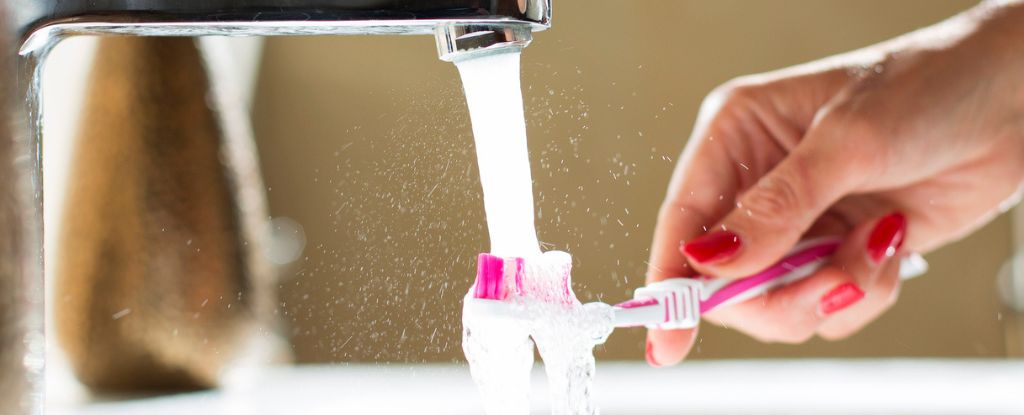You aren’t the only one using your toothbrush…
Researchers at Northwestern University in the US have found an “absolutely wild” number of viruses living on the heads of our showers and the bristles of the brushes we put in our mouths.
Some of the microorganisms detected are completely new to science.
While this news might send you running for the bathroom to throw out your toothbrush and scrub your shower clean, the presence of viruses on our things is not necessarily surprising or bad for our health.
Microbes like bacteria, fungi, and viruses live in all sorts of human-built environments. At this point, they practically have squatter’s rights. Even when we clean surfaces, they inevitably come crawling back.
That’s why dentists and doctors advise that you regularly replace your toothbrush and clean your bathroom to stop communities of microorganisms from growing out of control.
But a certain amount of exposure is inevitable, so it’s vital we understand what specific microbes we most commonly face.
While most of us know bacteria are lurking on pretty much every surface we can see, not as much is known about the viruses clinging to surfaces, even among scientists.
In fact, it was only after researchers in the US had analyzed the bacteria on shower heads and toothbrushes that another team, with some of the same authors, followed up with a study on viruses.
“We found many viruses that we know very little about and many others that we have never seen before. It’s amazing how much untapped biodiversity is all around us,” says microbiologist Erica Hartmann from Northwestern.
“And you don’t even have to go far to find it; it’s right under our noses.”
While Hartmann was at the University of Colorado, Boulder, she and her colleagues first had the idea to study microbes on toothbrushes. They’d heard concerns that flushing the toilet was spreading harmful pathogens around our bathrooms.
The small study they conducted found that bacteria on the average toothbrush tends to reflect the microbes in our mouths, not our toilets – phew! – but what about viruses?
“This project started as a curiosity,” explains Hartmann.
“We wanted to know what microbes are living in our homes. If you think about indoor environments, surfaces like tables and walls are really difficult for microbes to live on. Microbes prefer environments with water. And where is there water? Inside our shower heads and on our toothbrushes.”
To learn more about the interactions of bacteria and viruses in our bathrooms, Hartmann and her colleagues at Northwestern combed through the genomes of microbial communities living on 96 shower heads and 34 toothbrushes.
In their search, the authors identified numerous bacteriophages, which are viruses that infect bacterial cells and replicate within them.
Specifically, the team found viral communities – aka viromes – living on toothbrushes and shower heads that looked nothing like each other. The toothbrush showed a greater diversity of viruses than those in the shower.
Given that some viruses prefer to eat certain bacteria, it makes sense that viromes would differ between these two bathroom environments.
While the bacteria on toothbrushes tend to come from human mouths, those found on shower heads come from the environment, and some are known pathogens in city water.
The current study is just a small snapshot, but it did find that some of these viruses and their bacteria could be dangerous to human health if they proliferate.
“Whether interactions between phages and their host have noteworthy implications on human health risks such as antimicrobial resistance dissemination in the built environments requires further investigation,” the authors conclude.
However, Hartmann cautions against overreacting to these mostly harmless bugs.
“Microbes are everywhere, and the vast majority of them will not make us sick,” she says.
“The more you attack them with disinfectants, the more they are likely to develop resistance or become more difficult to treat.”
The study was published in Frontiers in Microbiomes.





